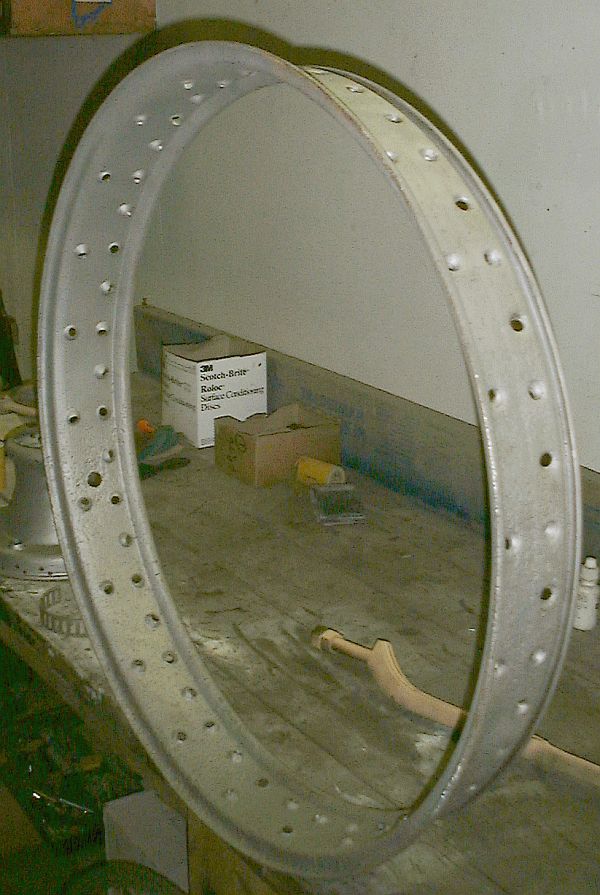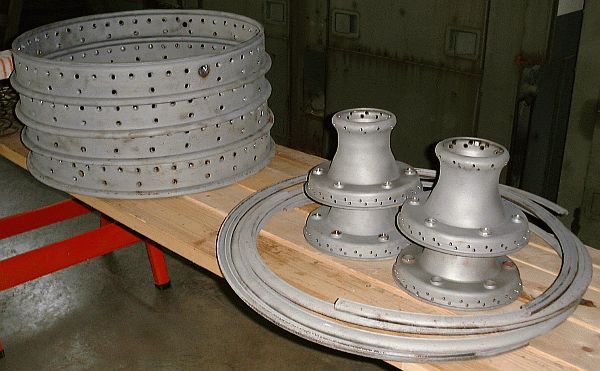|
The worst wire wheel of the five was cannibalized for spokes so that replacement spokes could be ordered from Dayton Wire Wheel. While Dayton was making spokes all the remaining spokes in the wheel were cut out using an air-powered cut-off wheel. During the cutting of the spokes from the wheel several of the spokes "fell out" after being cut. Examination revealed that spokes had become rusted at the hub just under the head of the spoke to the point of being nearly rusted through. The vibration of the high-speed rotary disk cutting through the spoke was sufficient for the spoke to break at the rusted area. What was so alarming about this finding is that the car had been driven 350 miles at the end of the mechanical restoration and had any of these spokes broken the wheel could have been severely compromised.
Once the spokes were cut, the hub and rim were cleared of spoke pieces. Upon trying the sample spoke in the holes of the hub and the sample ferrule in the rim they fit some holes but not others. The replacement sample spoke diameters would be 0.204" for the head end and 0.348" for the ferrule. Rusted and worn holes determined if the spoke and ferrule would fit through the hole or not. With the use of a #4 (0.209") drill for the spoke holes in the hub and a 23/64" (0.359") drill for the ferrule holes in the rim each hole was cleaned out and the spoke and ferrule fit easily. Thus spokes were ordered from Dayton Wire Wheel and one of the restoration steps would be to "clean-out" the rim and hub holes with the appropriate drill.
While waiting for the replacement spokes to be fabricated the hub with the ovaled holes was repaired. Due to the extent the hub's holes were ovaled it was determined that the best repair would be to fabricate custom sleeves for each of the hub's six holes. The hub would be mounted on a milling machine and the existing holes bored out to accept the sleeves. The sleeves would then be inserted in the hub and welded into position. The photograph above shows the sleeves welded into the hub. To the right is the locking ring that fits in the hub. The wheel nut incorporates a dog that catches a hole in the locking ring when the nut is tightened. With the dog locks the nut in position so that it will not loosen.
The biggest problem with the rims was pitting. Pictured above is one of the rims prior to bodywork being done on it. All of the ferrule holes have been drilled out and any ferrule hole that was enlarged or otherwise badly rusted was repaired.
After the replacement spokes were received from Dayton Wire Wheel and the car was well into the body restoration all the wheels could be removed from the car while it rested on jack stands. With the wheels removed, the tires and tubes were removed and the spokes cut away. The hubs, rims, and rings were sand blasted and any repairs completed. The photo above shows the major wheel parts ready for restoration by the bodywork team.
The above photograph shows two of the hubs and a rim with bodywork complete. The hubs and rims are ready for the next operation ~ spoking. |




